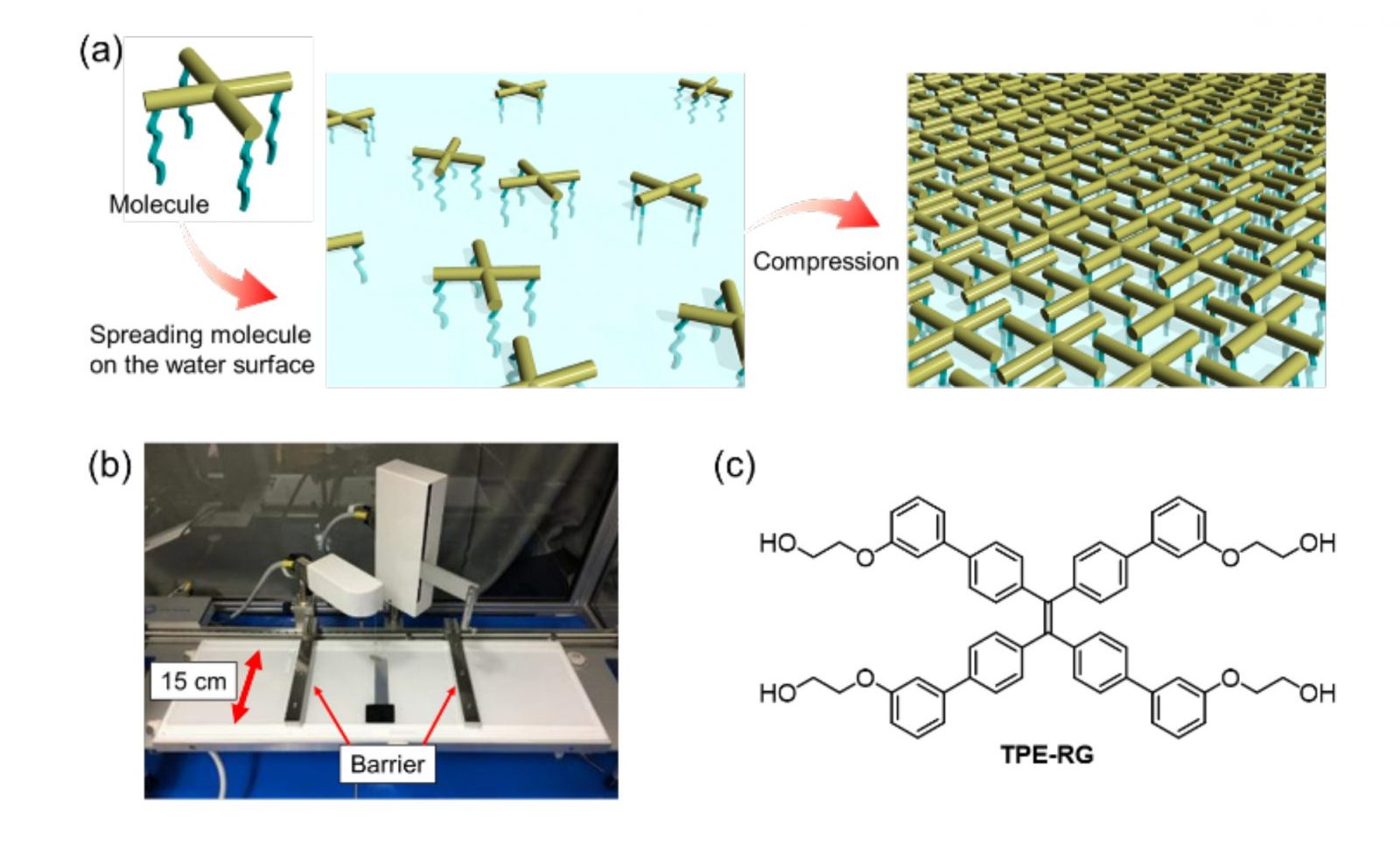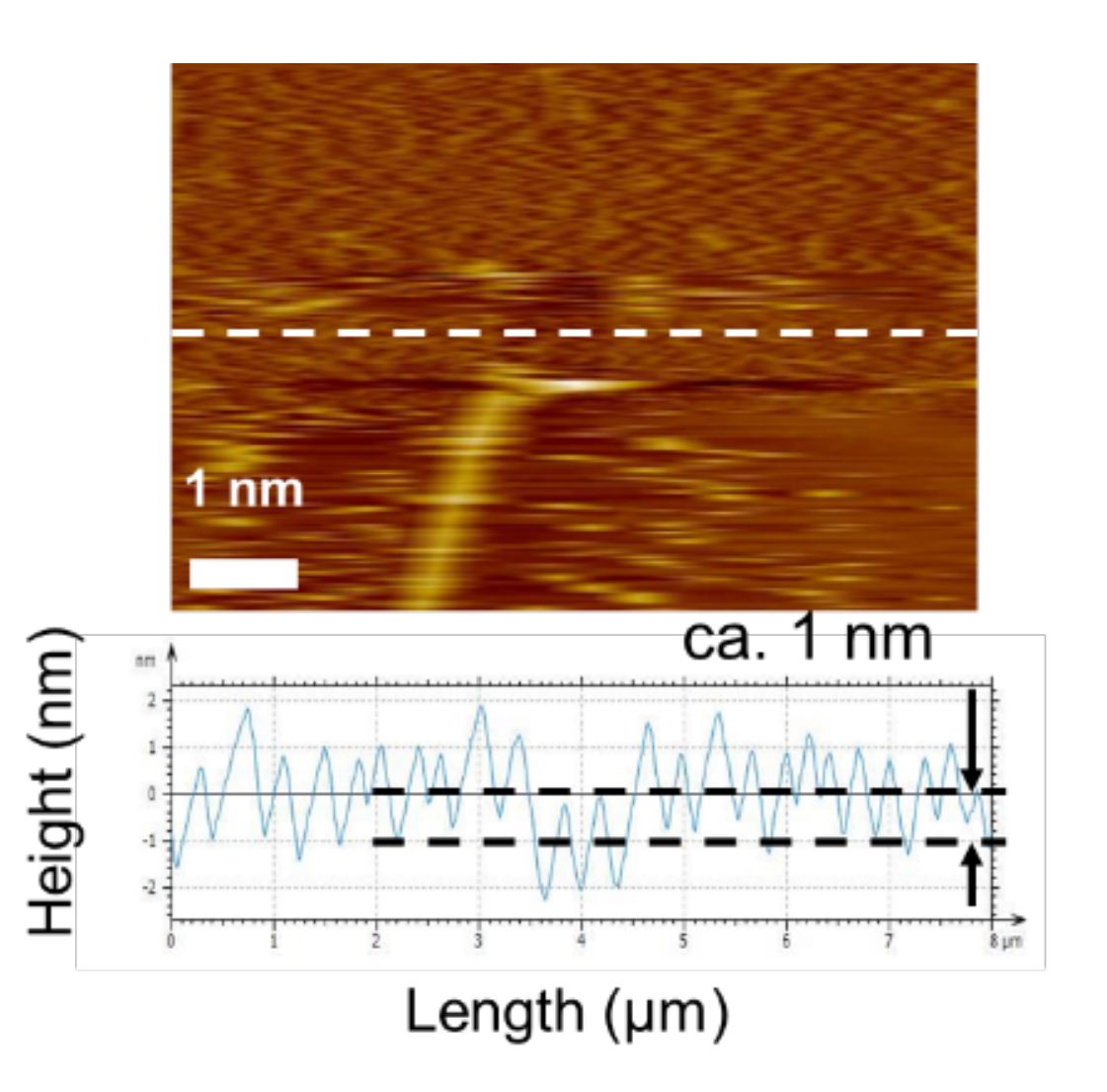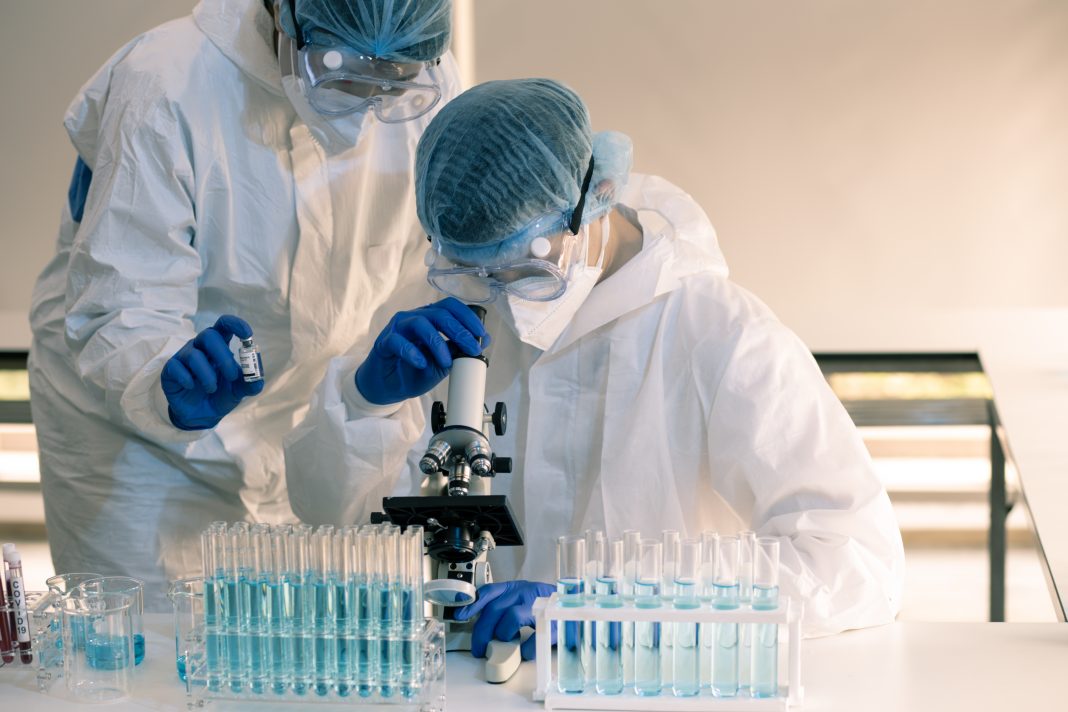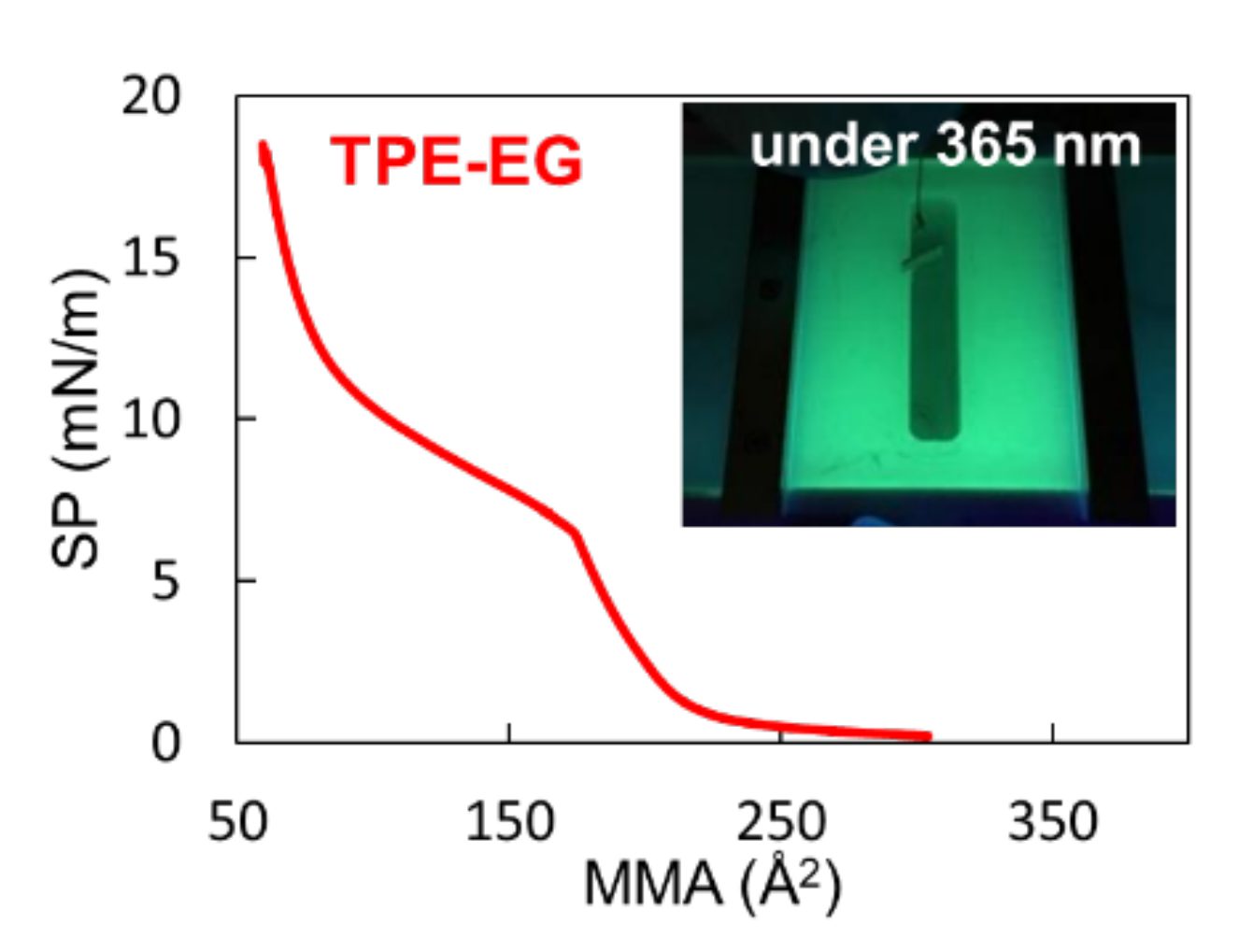Kohei Iritani, Department of Applied Chemistry, School of Engineering, Tokyo University of Technology, explores the construction of aggregation-induced emission monolayer at the air/water interface
Organic fluorescent materials using a molecule with aggregation-induced emission (AIE) effect have intense interest due to their potential utilities such as flexible display devices and photovoltaics. For the applications to two-dimensional devices, we purposed the construction of a monolayer formed by a tetraphenylethylene (TPE) derivative as an AIE molecule at the air/water interface. To this end, we synthesized amphiphilic TPE derivatives. We found that the TPE derivative formed a thin film with blue-green emission on the water surface. Moreover, from AFM observations, we confirmed that the transferred film had monolayer thickness.
Thin film materials based on aggregation-induced emission molecules
The development of fluorescent materials is a subject of keen interest for applications such as flexible display devices and photovoltaics. However, there is technical limitation of controlling of dispersion of the molecules in the materials, because it has been kwon that general fluorescent molecules exhibit concentration quenching phenomenon. In contrast, an aggregation-induced emission (AIE) molecule has been used (1) because it shows fluorescence in aggregation state due to restrain of relaxation of an excited molecule through conical intersection by inhibition of intramolecular mobility. Previously, AIE molecules have been used as a molecular sensor in solution (2) and as a donor for resonant fluorescence energy transfer in a crystal (3). On the other hand, it was reported that a two-dimensional molecular alignment exhibited incidentally fluorescence. (4) Although there is a possibility of use for the organic thin film materials, actively fluorescent two-dimensional materials using AIE molecules were not reported. In spite of a monolayer formed by a tetraphenylethylene derivative as the AIE molecule at the solid/liquid interface, (5) its fluorescent behavior was not demonstrated due to the concentration quenching effect of the solid substrate. It is necessary to devise a method for fabricating thin films which exhibits actively fluorescence.

Fabrication of the thin film at the air/water interface
We thought that the air/water interface would be used for the field to inhibit the intramolecular mobility of the AIE molecule. This method would make it possible to produce thin films by compression of the water surface after dispersion of the molecule on the water surface (Fig. 1a) as well as to transfer the film to suitable solid substrates. Therefore, we purposed the construction of a fluorescent monolayer formed by a tetraphenylethylene (TPE) derivative as the AIE molecule using a Langmuir-Blodgett (LB) trough (Fig. 1b).
To this end, we synthesized amphiphilic TPE derivatives, TPE-EG (Fig. 1c), having four ethylene glycol units as a hydrophilic unit. The thin film at the air/water interface was formed by dropping an organic solution of TPE-EG onto the water surface and then compressing the water surface using the LB trough. During compression, a mean molecular area (MMA)-surface presser (SP) isotherm was detected. Fig. 2 shows the MMA-SP isotherm of TPE-EG, in which the value of SP increased at predicted MMA. In addition, by irradiating UV light to the thin film on the water surface at 5 mN/m, green-blue emission was observed, suggesting that a fluorescent thin was constructed.

Transferring the thin film to solid substrates
To investigate the fluorescence of the film, we demonstrated transferring the film to a quartz substrate. For the transfer, a pre-inserted quartz substrate into the water was pulled up after the fabrication of the film. The transferred film acquired absorption and fluorescence spectra. The maximum wavelength of fluorescence of the transferred film was blue-shifted compared to that in the solution phase probably due to the difference of aggregation manner of TPE-EG between the solution phase and the film. Moreover, we evaluated the thickness of the film after the transfer on the SiO2 substrate by AFM observations, in which the different of height between the film surface and an exposed substrate by mechanically destruction using an AFM cantilever was detected (Fig. 3). As the result, the height was revealed to be approximately 1 nm, which exhibited single molecular thickness.
Summary and future work
We have constructed the fluorescent monolayer at the air/water interface using the AIE molecule. This result suggests that it is necessary to design the molecule precisely to obtain the fluorescent monolayer. This has assumed our team that its work is headed in the correct direction and the potential for the technology could be realized. We are now focused on developing the knowledge on the molecular design for the construction of more thermally stable monolayers and the changes in emission wavelengths.
References
- Y. Hong, J. W. Y. Lam, B. Z. Tang, Chem. Commun. 2009, 4332-4353.
- J. Shi, S. Zhang, M. Zheng, Q. Deng, C. Zheng, J. Li, F. Huang, Sens. Actuators B 2017, 238, 765-771.
- P. Duan, N. Yanai, Y. Kurashige, N. Kimizuka, Angew. Chem. Int. Ed. 2015, 54, 7544-7549.
- M. Servalli, K. Celebi, P. Payamyar, L. Zheng, M. Položij, B. Lowe, A. Kuc, T. Schwarz, K. Thorwarth, A. Borgschulte, T. Heine, R. Zenobi, A. D. Schlüter, ACS Nano 2018, 12, 11294-11306.
- X. Peng, L. Cheng, X. Zhu, Y. Geng, F. Zhao, K. Hu, X. Guo, K. Deng, Q. Zeng, Nano Res. 2018, 11, 5823-5834.
Acknowledgement
This work was supported by JSPS KAKENHI Grant number 21K14499.

This work is licensed under Creative Commons Attribution-NonCommercial-NoDerivatives 4.0 International.



